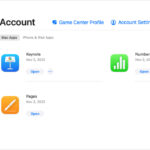The tradition of Mother’s Day, as we know it today, emerged from post-Civil War peace and reconciliation efforts. In the 1860s, activist Ann Reeves Jarvis encouraged a divided West Virginia town to hold “Mother’s Work Days,” uniting mothers of Confederate and Union soldiers.
Did you know? In the United States, there are over 70 million fathers who are celebrated each year.
While Mother’s Day gained commercial traction by 1908, inspired by Anna Jarvis’s campaign to honor her mother with a national holiday, Father’s Day faced a different path. The John Wanamaker department store in Philadelphia, recognizing the holiday’s profit potential, quickly sponsored a service dedicated to mothers, accelerating Mother’s Day’s widespread adoption. By 1914, it became a national holiday, officially recognizing “that tender, gentle army, the mothers of America.”
The Slow Start for Father’s Day and Early Gift Ideas
The movement to celebrate fathers didn’t ignite with the same immediate fervor. Perhaps, as a florist astutely observed, “fathers haven’t the same sentimental appeal that mothers have.” This sentiment might explain why the journey to establish Father’s Day was more gradual, and the concept of “First Fathers Day Gifts” was still nascent.
On July 5, 1908, a West Virginia church hosted what’s considered the nation’s first event specifically honoring fathers – a Sunday sermon commemorating the 362 men lost in the Fairmont Coal Company mine explosions the previous December. However, this was a singular event, not the start of an annual holiday tradition.
Alt text: Image showcasing a historical tidbit about the Founding Fathers, subtly linking historical figures to the concept of fatherhood.
The following year, Sonora Smart Dodd from Spokane, Washington, raised by her widower father alongside five siblings, championed the idea of a Father’s Day equivalent to Mother’s Day. She approached local churches, the YMCA, shopkeepers, and government officials, successfully gaining support. Washington State held the first statewide Father’s Day on June 19, 1910. Early “first fathers day gifts” at this time were likely simple, heartfelt gestures – perhaps handmade cards, small tokens of appreciation, or simply a day of rest and acknowledgment for fathers within the community.
The holiday slowly gained momentum. In 1916, President Wilson signaled his support by remotely unfurling a flag in Spokane from Washington, D.C., via telegraph. President Calvin Coolidge further encouraged state governments to recognize Father’s Day in 1924. Today, Father’s Day in the United States is celebrated on the third Sunday of June, while some countries, particularly in Europe and Latin America, honor fathers on St. Joseph’s Day, March 19th, a traditional Catholic holiday.
Controversy, Commercialism, and the Rise of Father’s Day Gifts
Despite its growing acceptance, Father’s Day faced resistance. Many men viewed it with disdain, as one historian noted, “scoffed at the holiday’s sentimental attempts to domesticate manliness with flowers and gift-giving.” They criticized the increasing number of holidays as commercial ploys, often funded by fathers themselves. This sentiment was prevalent even as the idea of “first fathers day gifts” began to take root.
In the 1920s and 1930s, a movement emerged advocating for a unified Parents’ Day, replacing both Mother’s and Father’s Day. Pro-Parents’ Day groups held rallies annually in New York City’s Central Park on Mother’s Day, emphasizing that “both parents should be loved and respected together,” as articulated by activist Robert Spere.
Alt text: A nostalgic image depicting mall shopping in the 1950s, representing the growing commercialization of holidays and gift-giving culture.
However, the Great Depression paradoxically boosted Father’s Day’s commercialization. Struggling retailers and advertisers aggressively promoted Father’s Day as a “second Christmas” for men, pushing items like neckties, hats, socks, pipes, tobacco, golf clubs, sporting goods, and greeting cards as ideal “first fathers day gifts” and subsequent presents. This era saw the deliberate marketing of specific products as traditional Father’s Day presents, shaping consumer expectations for years to come.
With the onset of World War II, advertisers further framed Father’s Day celebrations and gift-giving as a patriotic act, a way to honor American troops and bolster the war effort. By the war’s end, Father’s Day, though not yet a federal holiday, had become a firmly established national tradition, heavily intertwined with commercial gift-giving.
Finally, in 1972, amidst a presidential re-election campaign, Richard Nixon officially declared Father’s Day a federal holiday. Today, Americans spend over $1 billion annually on Father’s Day gifts, a testament to the holiday’s commercial success and the enduring tradition of expressing appreciation through gifts, a long evolution from the simple, heartfelt “first fathers day gifts” of the early 20th century.
HISTORY Vault
Stream thousands of hours of acclaimed series, probing documentaries and captivating specials commercial-free in HISTORY Vault

